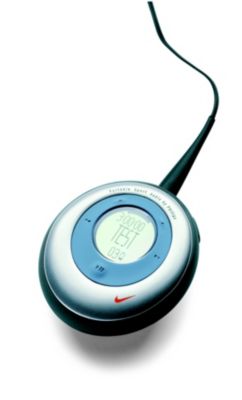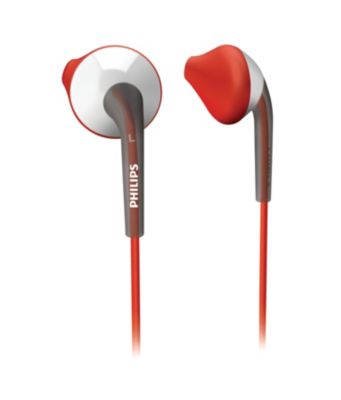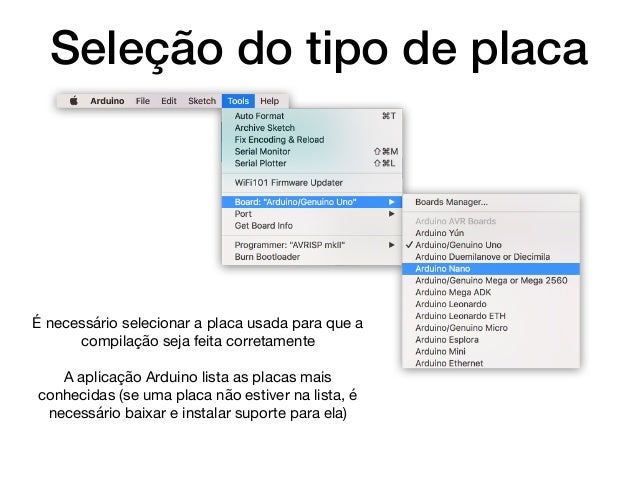When you plug the device into your USB, Windows will look for the associated driver, if it cannot find this driver then you will be prompted to insert the driver disc that came with your device. Common USB Device errors are ‘usb port not working‘, ‘device descriptor request failed error’ or ‘bugcodeusbdriver’ issues. Jul 05, 2017 Unknown devices show up in the Windows Device Manager when Windows can’t identify a piece of hardware and provide a driver for it. An unknown device isn’t just unknown — it’s not functioning until you install the right driver. Windows can identify most devices and download drivers for them automatically. An unknown device will feature a small warning triangle overlaying the device-type icon. If Windows thinks a device is broken or non-responsive, you'll see a red icon overlay, instead. If you discover a warning, install the correct driver before updating by right-clicking the unknown device. Philips SpeechControl Device and Application Control Software gives you full control over your hardware devices. The software allows you to customize the physical buttons of your SpeechMike dictation microphone, the pedals of your foot control, as well as the application actions within your workflow and speech recognition solution.
-->This topic is intended for OEMs who want to build a Windows 10 system with USB Type-C connector and want to leverage OS features that allow for faster charging, power delivery, dual role, alternate modes, and error notifications through Billboard devices.
A traditional USB connection uses a cable with a USB A and USB B connector on each end. The USB A connector always plugs in to the host side and the USB B connector connects the function side, which is a device (phone) or peripheral (mouse, keyboard). By using those connectors, you can only connect a host to a function; never a host to another host or a function to another function. The host is the power source provider and the function consumes power from the host.
The traditional configuration limits some scenarios. For example, if a mobile device wants to connect to a peripheral, the device must act as the host and deliver power to the connected device.

The USB Type-C connector, introduced by the USB-IF, defined in the USB 3.1 specification, addresses those limitations. Windows 10 introduces native support for those features.
Feature summary
- Allows for faster charging up to 100W with Power Delivery over USB Type-C.
- Single connector for both USB Hosts and USB Devices.
- Can switch USB roles to support a USB host or device.
- Can switch power roles between sourcing and sinking power.
- Supports other protocols like DisplayPort and Thunderbolt over USB Type-C.
- Introduces USB Billboard device class to provide error notifications for Alternate Modes.
Official specifications
Hardware design
USB Type-C connector is reversible and symmetric.
The main component are: the USB Type-C connector and its port or PD controller that manages the CC pin logic for the connector. Such systems typically have a dual-role controller that can swap the USB role from host to function. It has Display-Out module that allows video signal to be transmitted over USB. Optionally it can support BC1.2 charger detection.
Consider recommendations for the design and development of USB components, including minimum hardware requirements, Windows Hardware Compatibility Program requirements, and other recommendations that build on those requirements.Hardware component guidelines USB
Choose a driver model
Use this flow chart to determine a solution for your USB Type-C system.
| If your system... | Recommended solution... |
|---|---|
| Does not implement PD state machines | Write a client driver to the UcmTcpciCx class extension. Write a USB Type-C port controller driver |
| Implements PD state machines in hardware or firmware and support USB Type-C Connector System Software Interface (UCSI) over ACPI | Load the Microsoft provided in-box drivers, UcmUcsiCx.sys and UcmUcsiAcpiClient.sys. See UCSI driver. |
| Implements PD state machines in hardware or firmware, but either does not support UCSI, or support UCSI but requires a transport other than ACPI | Write a client driver for the UcmCx class extension. Write a USB Type-C connector driver Write a USB Type-C Policy Manager client driver |
| Implements UCSI but requires a transport other than ACPI | Write a client driver to the UcmUcsiCx class extension. Use this sample template and modify it based on a transport that your hardware uses. Write a UCSI client driver |
Bring up drivers
USB Function driver bring-up is only required if you support USB Function mode. If you previously implemented a USB Function driver for a USB micro-B connector, describe the appropriate connectors as USB Type-C in the ACPI tables for the USB Function driver to continue working.
For more information, see instructions about writing a USB Function driver.
USB Role-Switch driver bring-up is only required for devices that have a Dual Role controller that assumes both Host and Function roles. To bring-up the USB Role-Switch driver, you need to modify the ACPI tables to enable the Microsoft in-box USB role-switch driver.
For more information, see the guidance for bringing up the USB Role Switch Driver.
A USB Connector Manager Driver is required for Windows to manage the USB Type-C ports on a system. The bring-up tasks for a USB Connector Manager driver depend on the driver that you choose for the USB Type-C ports: The Microsoft in-box UCSI (UcmUcsiCx.sys and UcmUcsiAcpiClient.sys) driver, a UcmCx client driver, or a UcmTcpciCx client driver. For more information, see the links in the preceding section that describe how to choose the right solution for your USB Type-C system.
Test
Perform various functional and stress tests on systems and devices that expose a USB Type-C connector.
Test USB Type-C systems with USB Type-C ConnEx - Run USB tests included in the Windows Hardware Lab Kit (HLK) for Windows 10.
Run USB function HLK tests with a C-to-A cable (search for Windows USB Device in the HLK
Certification/ComplianceAttend Power Delivery and USB Type-C compliance workshops hosted by the standards bodies.
See also
Foot control
- For digital systems
USB plug - Anti-slip bottom elements
keep the foot control in the right place - Ergonomic design
for professional use and outstanding comfort - Configurable pedal functions
for tailoring the foot control to your personal preferences
- For digital systems
USB plug - Anti-slip bottom elements
keep the foot control in the right place - Ergonomic design
for professional use and outstanding comfort - Configurable pedal functions
for tailoring the foot control to your personal preferences
Transcription made easy
with a Philips foot pedal
The ergonomic design of the new Philips foot pedal range sets new standards in terms of usability in the professional dictation arena. The development is based on detailed research into the movements made during transcription. Transcriptionists can stop and start playback with only a slight movement of the heel, and without lifting the foot unnecessarily, which both increases efficiency and makes the device a pleasure to work with.
Features
Anti-slip bottom elements keep the foot control in the right place
Anti-slip bottom elements keep the foot control in the right place
Equipped with anti-slip bottom elements, the foot pedal always stays in the right place.
Configurable pedal functions for tailoring the foot control to your personal preferences
Configurable pedal functions for tailoring the foot control to your personal preferences
The functions of the foot pedal can easily be adapted to one's personal preferences, to further enhance ergonomics of the device (LFH2330).
Ergonomic design for professional use and outstanding comfort
Ergonomic design for professional use and outstanding comfort
The foot pedal was developed in cooperation with hospital ergonomists and professional end users to ensure a perfectly smooth transcription process with minimal physical strain.
Slim design for minimized physical strain due to less foot movement
Slim design for minimized physical strain due to less foot movement
Transcriptionists can stop and start dictations with only slight movements of the heel, and without lifting the foot unnecessarily, which both increases efficiency and makes the device a pleasure to work with.
Central configuration and management saves time and resources
Central configuration and management saves time and resources
The foot pedal is easy to deploy and configure using the Philips SpeechExec remote device management software. It allows administrators to centrally manage, update, and maintain the configuration and settings of Philips dictation devices, saving valuable time and resources.
Related products and accessories
Enter your VoiceTracer serial number
Philips Port Devices Driver Updater
The VoiceTracer Speech Recognition Software only works with Philips VoiceTracer Audio Recorders. To download the installation file, enter the serial number of your VoiceTracer, then click Download.
Find your serial number


Each product has a unique serial number. A serial number usually starts with three letters followed by eleven numbers, e.g. DVT25100012345.
The serial number can be found on the rear side of the product or inside the battery compartment and in the Device Settings menu, under Information.
Downloading...
Philips Port Devices Driver Scanner
If your download does not begin, please click here to try again.
Package contents
- Foot pedal
- User manual
- Installation CD (LFH 2310 / 2330 / 2320)
Green specifications
- Compliant to 2002/95/EC (RoHS)
- Lead-free soldered product
Specifications
- Product dimensions:
- 195 mm × 130 mm × 35 mm/7.7' × 5.1' × 1.4'
- Weight:
- 660 g/23.3 oz
Accessories
- Philips transcription headphones LFH0234
- Philips transcription headphones LFH0334
- Philips SpeechExec workflow software
System requirements
- Operating system:
- Windows XP/7/Vista (32/64 bit), Mac OS X 10.11/10.10 (Mac functionality may be limited)
- Free USB port
Manuals and documentation
- User manual English (4.2 MB)
Software and drivers
- SpeechControl driver and configuration software
4.3.430.11 - Windows ZIP
- SpeechControl driver and configuration software
4.3.430.11 - Windows ISO
Marketing & sales material
- Leaflet English (387 KB)
Where to buy
Find a local retailer
